I’ve wanted to do a post on baking with real pumpkin for a while now. We’re all used to reaching for the cans of pumpkin purée for our pumpkin pies, but there’s something beautiful about baking your own pie pumpkin and making your own purée, not least of all is that each pumpkin tends to make way more than you need! (Hey, I’ll never quibble with having extra pumpkin around for my baking!)
 Fresh off a week-long business trip to New England, I was trying to make up for lost time with my kids, so I thought what better than to take them to the pumpkin farm! We have an outing to the farm at least once every October to pick pumpkins, run through the corn maze and maybe take in a hay ride, so it seemed like the perfect after school activity this week.
Fresh off a week-long business trip to New England, I was trying to make up for lost time with my kids, so I thought what better than to take them to the pumpkin farm! We have an outing to the farm at least once every October to pick pumpkins, run through the corn maze and maybe take in a hay ride, so it seemed like the perfect after school activity this week.
We headed out on our mission to each pick the perfect pumpkin. My son, not surprisingly overestimated his own strength and picked a big one (seems the 100-pounder we picked up two weeks ago is now old news) and of course I had to help carry it from the opposite end of the field all the way back.
My daughter chose a more delicately shaped, somewhat smaller gourd, but also needed help carrying it. They insisted I get one too, oh yes, then we needed to get one for nearly everyone else they could think of. So, shoulders sagging from the weight of bags and bags of pumpkins of all sizes (did I mention you pay for these pumpkins by the pound?!), we trekked back to the big red barn to pay for our purchases. (Thankfully, from there they loaned me a wheel barrow!)
Oh but wait, there’s more. Turns out, my son had designs on making these pumpkins into pies – his favorite dessert. I proceeded to explain that pie pumpkins are different from jack-o-lantern pumpkins because they are sweeter and less stringy inside. Well, then, you just know we had to get a special pie pumpkin as well, and since he was picking it out, it weighed 7 pounds (now, that’s a lot of pie).

I made this pie pumpkin into an incredible pumpkin pie and realized that although we’ve covered making the crust from scratch in recipes, newsletters, videos and ebooks, I had never really shared with you, my dear readers, the art of baking the pumpkin FOR the pie from scratch.
So, I have outlined all the steps below for you to make delicious pumpkin purée for your next gluten free pumpkin pie, cake, bread, cookie, donut (yes, I said donut), or any other pumpkin concoction you can devise.
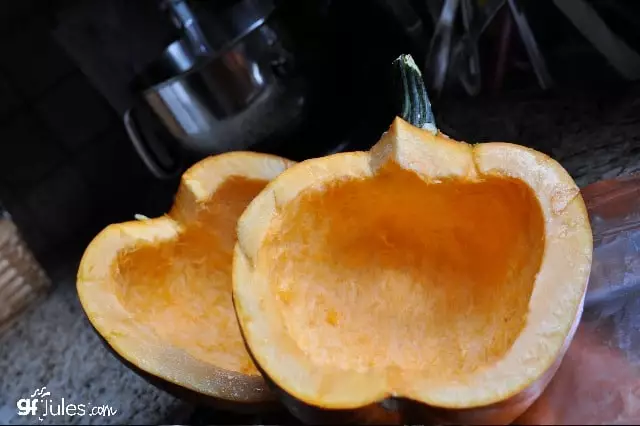
My 7 pound pumpkin baked out to 6 cups of purée—plenty for several recipes (so far this week I’ve made pie, bread and donuts, and I still have more left!). No need to buy such a large pumpkin, but if you do end up with more pumpkin than you need, feel free to store the leftover purée in a freezer bag and leave it in deep freeze for up to one year! Saving work next autumn sounds good to me!
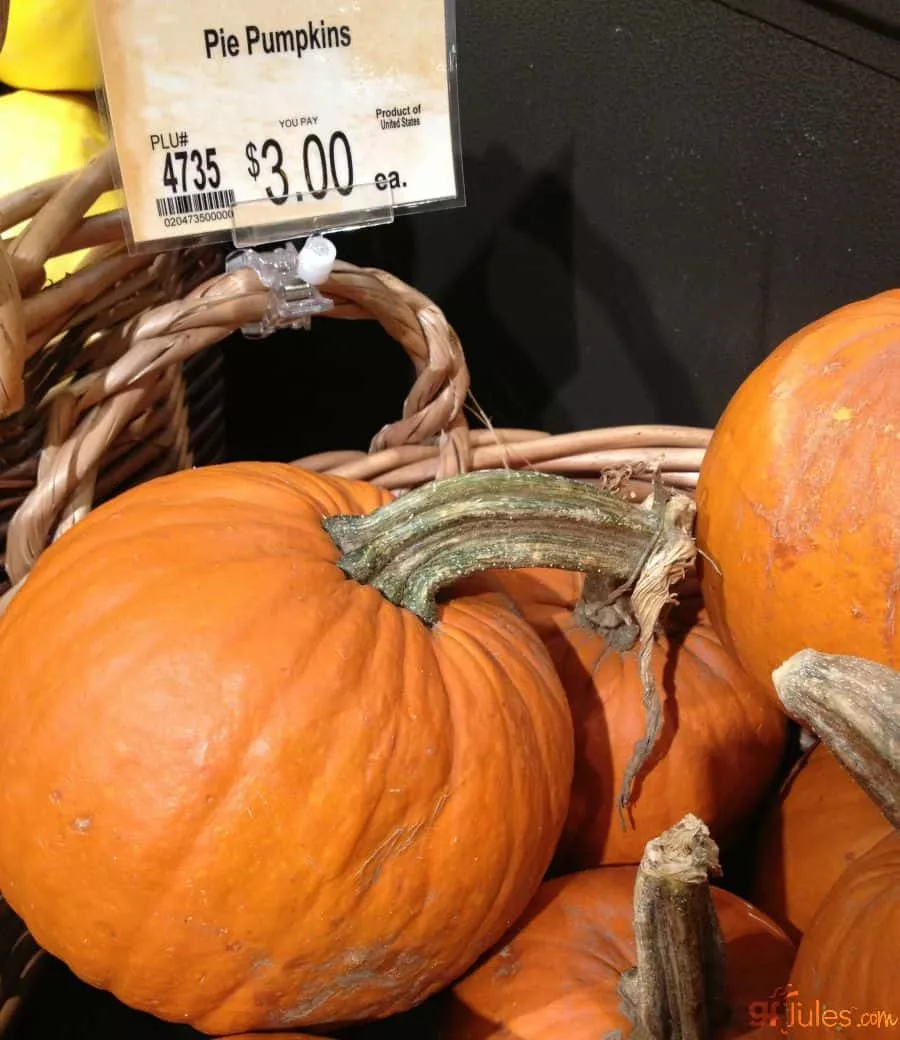
Baking with Real Pumpkin
Ingredients
- 1 sugar or pie pumpkin
Instructions
- Select a pie pumpkin, not a jack-o-lantern variety. The local farm should be able to help you with your selection.
- Cut the pumpkin in half with a large, sharp knife.
- Scoop out the inside seeds and strings with a spoon and discard (you may roast the seeds for a delicious snack, if you like – see my blog posting for the how-tos).
- Wrap the two halves in foil and place, cut side down, on a baking sheet. Bake in an oven preheated to 375°F for 1 hour, or until fork tender.
- Remove from oven and allow to cool before handling.
- Scoop out the “meat” of the pumpkin when cooled, and purée in a large food processor or blender. If your pumpkin is particularly stringy, push through a sieve to remove the strings before baking with it. For my 7 pound (precooked) pumpkin, I got 6 cups (3.6 pounds) of purée – plenty for a few pies and leftovers! Use purée promptly, or cover and refrigerate for use up to 4 days later, or deep freeze for up to 1 year.
- (with step-by-step photos)
** Please keep in mind that nutrition information provided is per serving, which may vary. While we have taken care to provide you with the most accurate nutritional values possible, please note that this information may differ significantly depending on the exact ingredients and brands that you choose to use to make this recipe. Additionally, where options are given for ingredients, the resulting calculation may include all ingredient options instead of only one per line, skewing the totals significantly.
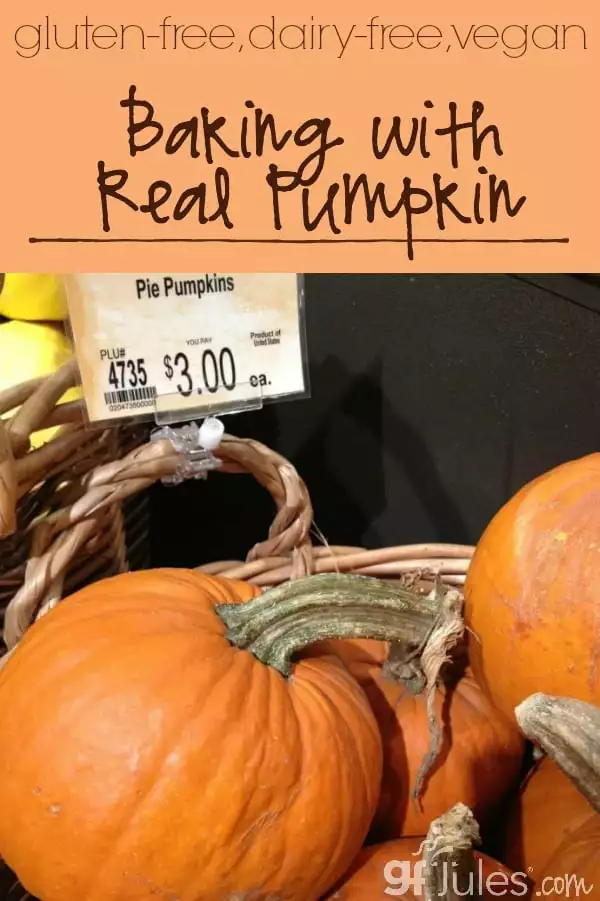













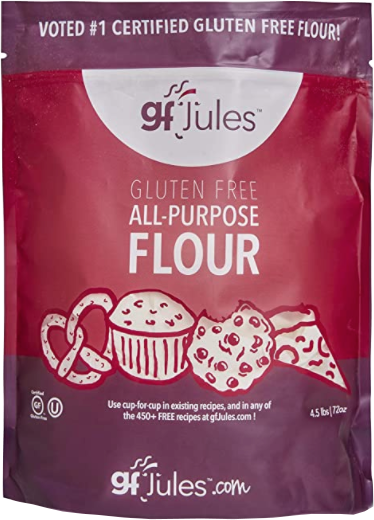
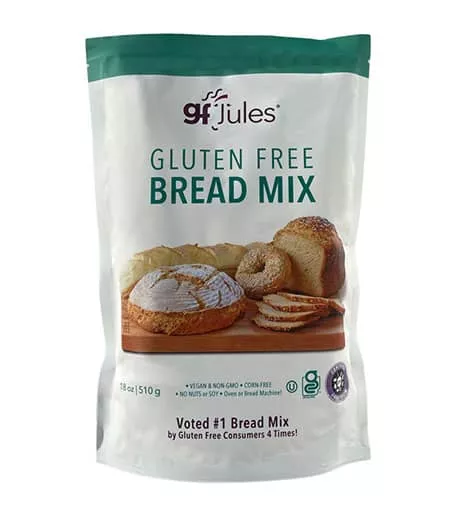

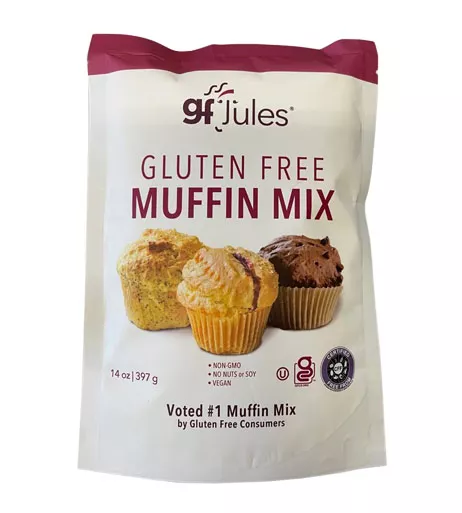


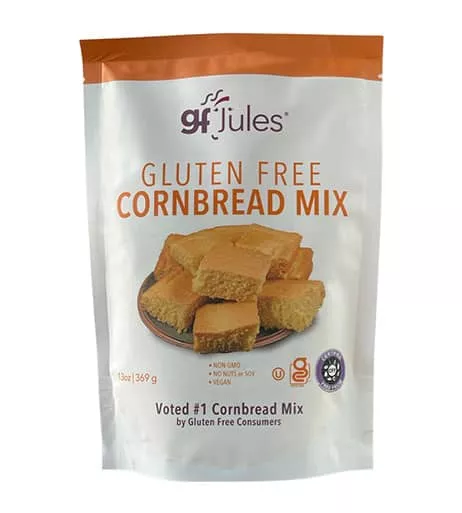



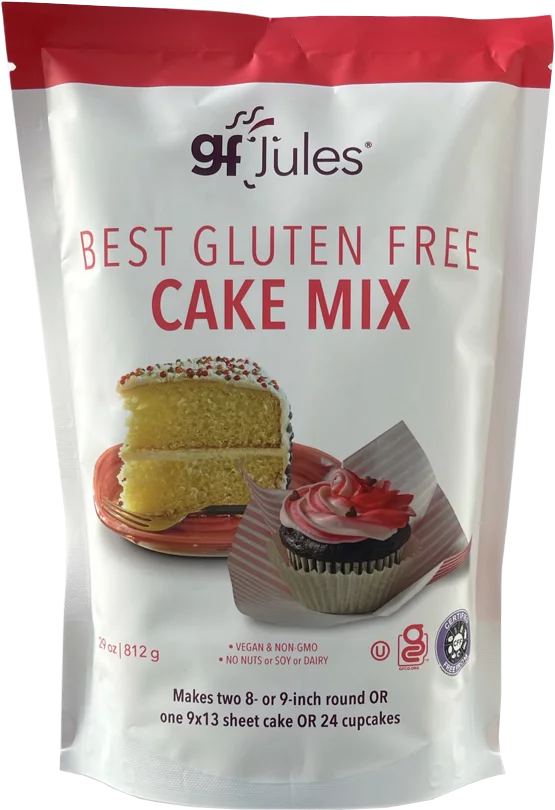

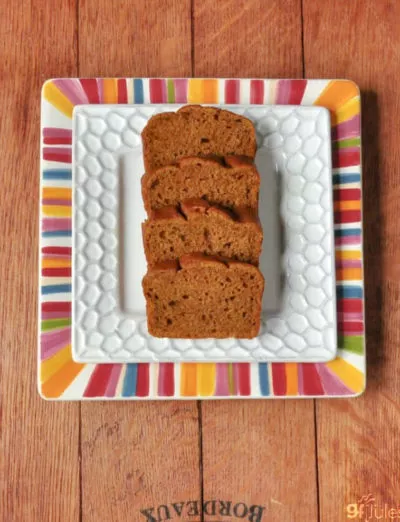
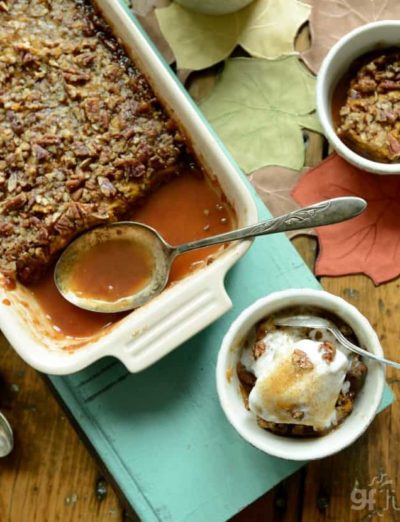
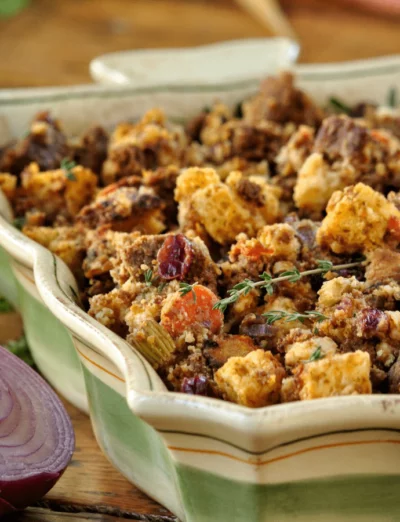







This is also useful for most types of winter squash, such as acorn, buttercup, butternut, hubbard, etc (of which pumpkin is a type) and they can be used for all the same purposes. You can use the squash purée in all the same recipes, or use the pumpkin as a side dish at dinner. The flavor profiles are subtly different, but still work well for your best recipes.
I particularly like squash/pumpkin soup!
Thanks Mark, you’re so right! Thanks for chiming in. Happy baking!
~jules
hi love pumpkin. can’t wait to try these
recipes. what is the best substitute for the sugar?
Heidi
Heidi – if you can use coconut palm sugar (unrefined, but granulated), it works great. Two of the three pies I brought on FOX News were made with coconut palm and they were delicious!
Earlier this year my adult daughter was diagnosed with Ceiliac so my wife and I have started adjusting our cooking so that when our daughter visits we can all eat the same foods. One of those changes was making a Gluten Free (GF) pumpkin pie. In the past I would have used wheat flour for the crust. Recently my daughter tried making GF graham crackers which partially failed getting only crumbs. However, I used the GF graham crackers crumbs making a crust for a cheesecake but using freshly made pumpkin filling. To make this crust more compatable to pumpkin I added cinnamon, cloves and nutmeg to the graham cracker crust mix. This came out suprisingly good if not a bit crumblier than I would have liked. But I thought this might be a option for a differnet crust for pumpkin pie.
Sergio, your creativity is admirable! I have done the same thing with extra gluten-free graham cracker crumbs I have and it works beautifully on a pumpkin pie as you described with extra spices. Check out my graham cracker/ginersnap pie crust recipe and see if this works well for you too! Happy Thanksgiving to you and your family!